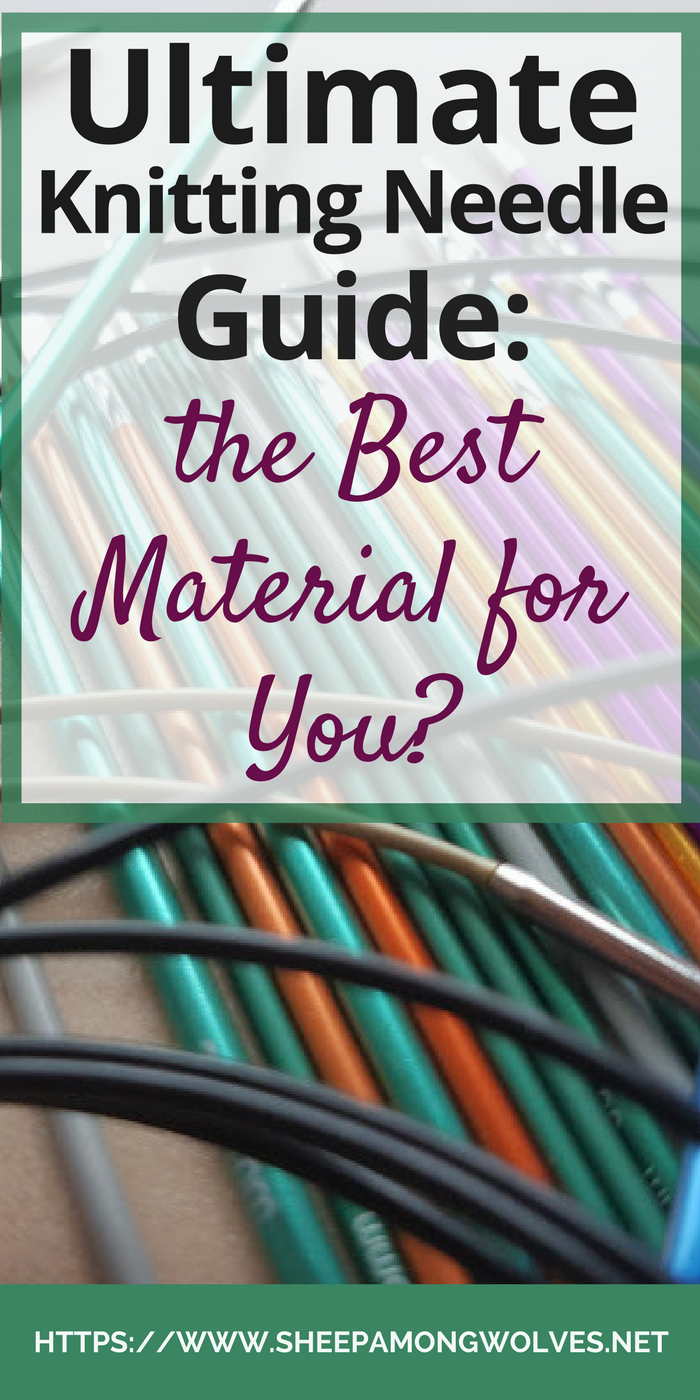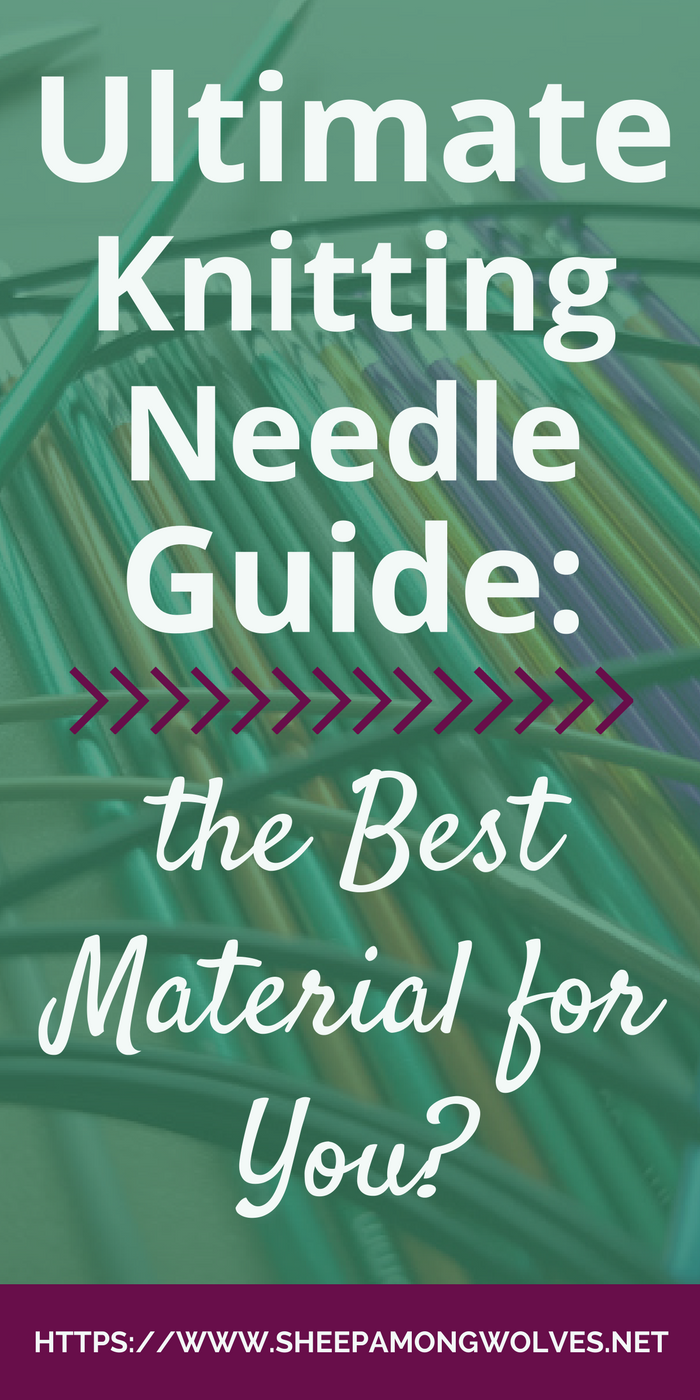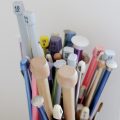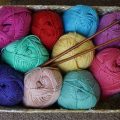Now you know a lot about needle types but what about their materials? Again there is a lot to choose from, and the material also affects your knitting and knitting experience. Nothing is right for everyone or even every project.
Wood
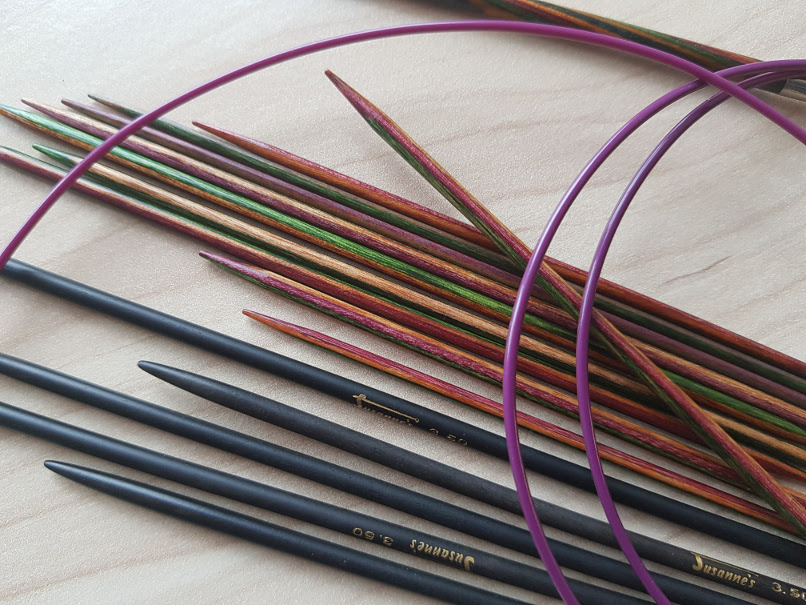
Wooden needles
Wooden needles are light and flexible, and they feel warm in your hands (especially compared to metal needles). This is a material often favored by people who have problems with their joints (carpal tunnel, RSI or rheumatism for example). The light weight and warmth make knitting more comfortable for them.
These needles tend to have some grip; the yarn doesn’t slide as smoothly and easily over them as they would over metal. This makes them an excellent choice for loose knitters. With metal needles, they often have the problem that stitches keep sliding and dropping off of the needles. Tight knitters should be aware: This quality might over time cause you pain as you have to work harder to manipulate the stitches. Also, if you are using yarn that has itself more grip, wooden needles might cause you more strain.
Be careful where you put your needles down. Wooden needles can break. The thinner the needle, the more easily they break. Which is also a good reason for why tight knitters should not be using thin wooden needles. They might break off in their hands when manipulating the stitches.
- Knitter’s Pride Royale Fixed Circular Needles (*)
- Knitter’s Pride Symfonie Dreamz Double Pointed Needles (*)
- Pony Rosewood Single Pointed Needles (*)
Bamboo
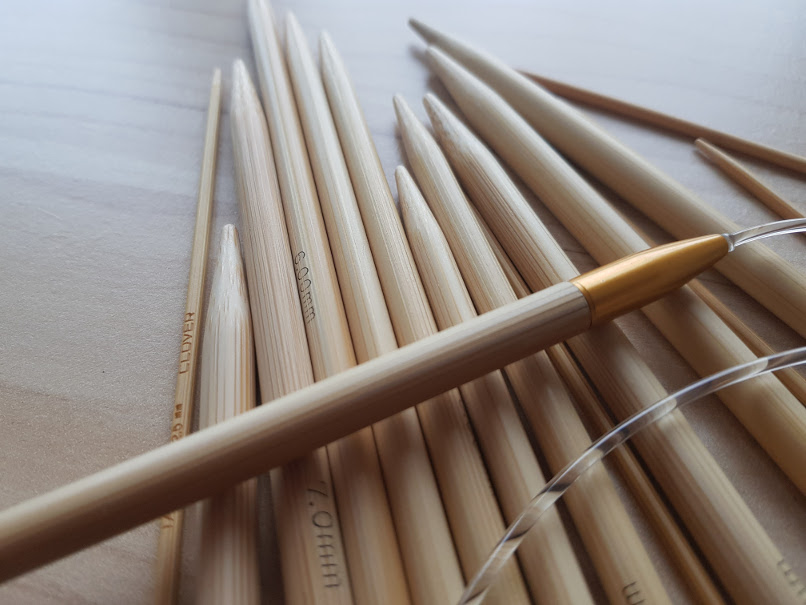
Bamboo needles
Now bamboo is very similar to wood. It’s also very light, possibly even lighter than the wooden needles, it has more flexibility than wood and feels warm to the touch. The surface of these needles is also pretty much the same.
Because they have more flexibility, they also break a little less quickly. This makes them a good needle to try out if you like wooden needles but have problems with them breaking on you.
- HiyaHiya Bamboo Circular Needles (*)
- Addi Light Bamboo Double Pointed Needles (*)
- Pony Bamboo Single Pointed Needles (*)
Metal
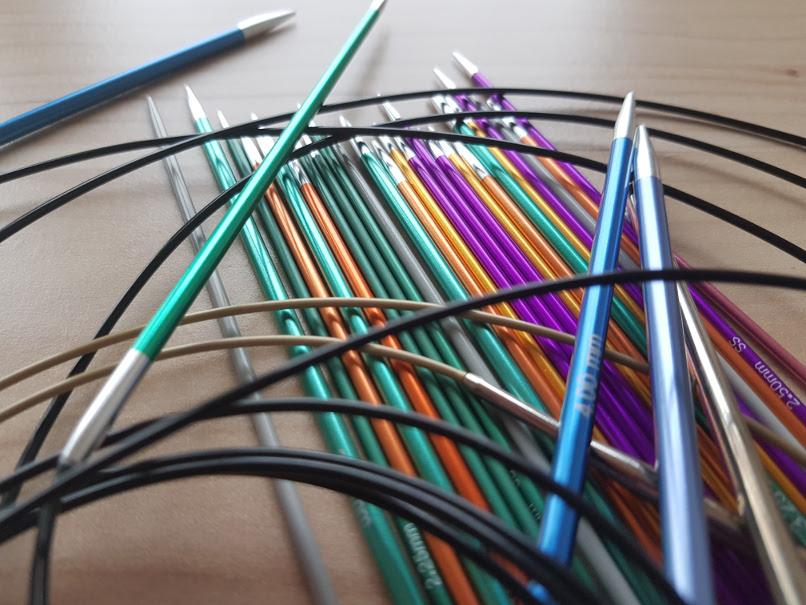
Metal needles
These needles tend to feel cool at first but warm up in your hands. They are a bit heavier than bamboo or wooden needles and therefore can be difficult for people with problematic joints.
They are however a good idea for tight knitters to try out. Yarn glides more smoothly over metal and makes knitting with these needles less tiring for the hands of a tight knitter. I myself am using metal needles and find them easier on my hands and wrists even though I’ve always had weak joints.
- Knitter’s Pride Nova Platina Needles (*)
- Knitter’s Pride Nova Platina Double Pointed Needles (*)
- Pony Aluminium Single Pointed Needles (*)
Plastic
Plastic needles are also very light, but they can break especially when they are thin. That is why you mostly see them in larger sizes. I have yet to see one smaller than 3.5 mm (but I don’t really seek them out either).
They also feel cool at first but warm up very quickly. Their surface is typically very smooth, and the stitches glide well over them.
I don’t like to use plastic needles myself. I dislike how they feel in my hands. But I would say, give them a try if you are a tight knitter that likes to knit with heavy, bulky weight yarn.
- Addi Gold Glitter Fixed Circular Needles (*)
- KnitPro Trendz Double Pointed Needles (*)
- KnitPro Trendz Single Pointed Needles (*)
Carbon
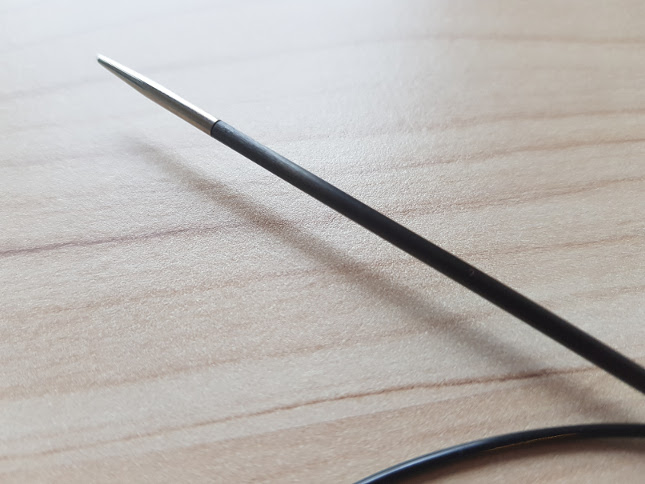
Carbon needle – KnitPro Karbonz
KnitPro also offers some carbon fiber needles. They are very light and flexible but also very sturdy and don’t break as easily as wooden needles even when you are using skinny needles. The tips are coated in metal to keep the fibers from fraying. The carbon has a similar grip to wood and bamboo.
KnitPro Karbonz:
Glass or Ceramic
Yes, there are knitting needles made of glass and ceramic. You can buy them on Etsy and eBay. Of course, they are very smooth and supposed to make knit quicker. The glass needles are usually made from Pyrex glass which is pretty sturdy. Ceramic needles are a lot rarer and harder to find. I couldn’t find a link to any right now. I’ve seen them before but I suppose they are mostly collectible items. I can’t imagine them to be durable enough that you could actually use them.
Bone and Ivory
This is the material knitting needles used to be made from once upon a time. There still are some bone needles to be found on Etsy. You can use them of course, though I don’t know if they have any benefits over modern style needles. Other than maybe giving you back to the roots feeling or being a luxury item. They are definitely nice for people who like old, traditional tools and are interested in history.
General Tips
Your perfect needle right now may not always be your perfect needle. You, your knitting style and your preferences will change over time, so don’t be surprised if you suddenly prefer metal over wooden needles or straights over circulars.
When looking at circular needles see if you can try out different ones from different brands. The cables are always different. Some are very flexible; some are very sturdy and stiff. Also, the join between cable and needle changes from brand to brand. You may find that some snag for you while others don’t.
Not all needles of the same type are alike. The tips may vary for one thing. Some have blunt tips; those are good to use for yarn that splits easier. Others are very pointy; those are a great choice for tight knitters. And even the surfaces are different. Not all wooden needles have the same amount of grip. And not all metal needles are as smooth. Try different ones and see what you like best.
My Favorite Needles
As I’ve said before I prefer circulars and have for quite a few years now. I started out with straight plastic needles and very quickly switched to double points and circulars – none of them plastic. My first circulars were bamboo (don’t remember the brand anymore) and then Addi metal lace needles, but I didn’t really like how their surface felt in my hands.
I then knit for a very long time on KnitPro Harmony Wood needles (same as Symfonie). These have a nice coating, so they have a little less grip than most wooden needles. I tried out KnitPro Karbonz for a short time but prefer the wooden needles to these. Finally, I tried out KnitPro Nova metal needles and loved them. And about a year ago I started using their Zing line. I love these needles. The surface feels nice and smooth, the needle tips have a good length, they are just pointy enough for me, the cables aren’t too stiff, and the weight is good as well. And on top of all that the Zing needles are colorful and pretty similar to Signature Needle Arts needles but much more affordable for me (with shipping and import taxes they become a luxury item).
What is your favorite material? Have you seen or used glass or ceramic needles before? Do you know of any other materials used for knitting needles? Please let me know in the comments below!
Affiliate disclaimer: This post contains affiliate links (links marked by (*)). That means that at no extra cost to you I will receive a small compensation should you choose to purchase after clicking on such a link. Please, read this for more details.
So, this was it for my needle guide. I hope it was useful to you. In light of recent events in my personal knitting life, I will talk about knitting mistakes next week. Which ones I used to make and which ones I am still guilty of (there are plenty). This should be fun! Come back next week to find out more!
Did you enjoy this post? Then please share it on Pinterest!
